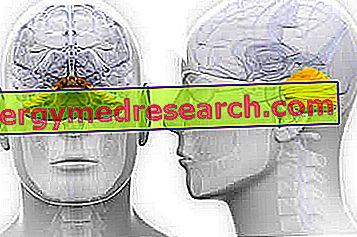What is Respiratory Rehabilitation?
Respiratory rehabilitation is a multidisciplinary treatment program for patients with respiratory disorders.
This program is calibrated "tailored" to the patient in order to try to optimize his autonomy and his physical and social performance.
Benefits and Directions
Respiratory Rehabilitation and COPD
The reduced tolerance to the effort of the COPD patient is due to the establishment of a vicious circle whereby the patient reduces physical activity due to dyspnea, therefore tends to lose trophism and strength of the peripheral muscles.

The patient therefore develops disability, loss of autonomy, limitation in daily activities, sometimes dramatically reducing his quality of life.
Until the 1990s it was thought that COPD patients were not able to reach a sufficiently high exercise intensity to be able to train the muscles, especially those of the lower limbs. In those years respiratory rehabilitation was almost exclusively aimed at strengthening the respiratory muscles (diaphragmatic re-education).
Casaburi clearly demonstrated that in severe COPD patients significant results can be seen in a comprehensive exercise re-training program in 1991
Currently retraining is considered the main aspect of a rehabilitation program.
What is the ideal patient for respiratory rehabilitation?
- COPD patient with dyspnea and reduced exercise tolerance.
Often this type of patient is sent to a rehabilitation program only at an advanced stage of the disease.
- In fact, even the most serious patients benefit from the rehabilitation program. BUT starting a patient at an earlier stage allows preventive strategies that are effective in stopping the progression of the disease (smoking cessation, nutritional strategies) and greater possibilities to prescribe exercise.
What are the advantages of respiratory rehabilitation?
- Patients with mild to moderate COPD with training have improvements similar to normal.
- Patients with severe COPD improve endurance and well-being without significant increases in VO2
Respiratory rehabilitation reduces symptoms, increases work capacity and improves the quality of life in people with chronic respiratory diseases even in the presence of irreversible structural alterations.
This is made possible because the disability derives in many cases not only or not so much from the pulmonary pathology itself but from other associated pathologies. For example, even if the level of bronchial obstruction or hyperinflation in COPD patients does not change significantly with a program of rehabilitation, muscle training and improved gait mean that the patient can walk faster with less wheezing
Targets
The goals of cardiorespiratory rehabilitation in patients suffering from COPD are multifactorial and include:
- reduction and control of respiratory symptoms.
- Increase in operating capacity.
- Improving the quality of life.
- Reduction of psychological impact due to functional reduction and disability.
- Reduction in the number / severity of exacerbations.
Set up a rehabilitation program
Initial assessment
First, it is important to subject the patient to a complete functional assessment, measuring the degree of disability and dyspnea:
- WALK TEST: determination of the maximum distance traveled by the patient in a given time (2, 6 or 12 minutes). During exercise it is important to monitor heart rate and oxygen saturation in the blood (SpO2). The value of SPO2 indicates whether the patient's blood is more or less oxygenated at its best; a value of SPO2 in the 100% -94% range is considered normal, a value less than 80% shows a serious hypoxic state
It is very important to explain to the patient the test procedure and encourage it during the test.
Note: the gait test is more sensitive than the maximal cycle ergometer test in identifying exertional stress in COPD patients
- SHUTTLE TEST: measures tolerance to exercise during level walking.
The patient walks back and forth in a corridor 10 meters long, the speed and rhythm are marked by a sound signal. The test ends when the patient fails to maintain the required speed.
Note: the shuttle test is an easily reproducible test with a significant correlation with the VO2max
- BORG SCALE: Non-linear numerical scale for the assessment of dyspnea during exercise. This scale is composed of 10 points which are accompanied by descriptors (anchors).
- VISUAL ANALOGUE SCALE (VAS)
Straight horizontal or vertical line (10cm) with dashes at the ends with descriptors (verbal expressions or figures) that define the polarity. Used for the evaluation of dyspnea during exercise.
Importance of VO2Max
These and other tests allow to accurately measure the maximum work load the subject can bear (VO2max). This parameter, called maximum oxygen consumption, indicates the maximum potential of aerobic metabolism and is a function of both the capacity of oxygen supply to the tissues by the respiratory and cardiovascular system, and the ability to extract oxygen from the tissues (Maximum consumption of oxygen = Heart rate x Systolic range x arteriovenous oxygen difference).
The knowledge of the VO2max of the patient with COPD allows to plan the training setting the various parameters of the respiratory rehabilitation program (intensity, duration, frequency):
- In normal subjects aerobic training generally takes place between 60% and 90% of the maximum heart rate or between 50% and 80% of VO2max.
- Generally these levels are maintained for 20-45 min x 3-4 times a week.
- Until recently it was thought that the ventilatory limitations typical of patients with moderate-severe COPD precluded the possibility of performing activities at similar levels. On the basis of studies conducted in recent years, it has been established that even subjects with moderate-severe COPD can train at a level of around 60% of VO2max with significantly better results than those obtained by exercising at 30%.
Training COPD patients at a level corresponding to 60% -70% of the maximum workload produces:
- an increase in exercise capacity (less dyspnea with equal effort)
- increase in the number of oxidative enzymes in peripheral musculature (increase in the number and size of mitochondria)
- a reduction in blood levels of lactic acid and ventilation for the same workload.
EXERCISE MODES:
- Aerobic endurance training
- Reinforcement of large muscle groups
RECOMMENDED EXERCISE TYPES:
- Treadmill
- Exercise bikes
- Walk
- Stairs
- Combinations of several free-body exercises
TRAINING FREQUENCY
Training 60% -70% of VO2 max for 20'-30 'for 3-5 times / week.
A similar program can be followed by most COPD patients while others with severe airway obstruction may not tolerate such intensity training. Alternatively, it is possible to adopt an interval working method, working at 60% -80% of the maximum exercise capacity for periods of 2 or 3 minutes, separated by 2 or 3 minutes of rest.
The total duration of the respiratory rehabilitation program is 8-12 weeks, at the end of which the subject will be encouraged to remain active so as not to lose the benefits gained.
PATIENT COLLABORATION
It is very important that the patient respects the various training parameters (intensity, duration and frequency).
As in healthy subjects, even in COPD patients the positive effect of physical exercise is maintained for the duration of training. On the contrary, a reduction in the intensity, duration or frequency of the respiratory rehabilitation program significantly reduces the beneficial effects.
Conclusions
Respiratory rehabilitation:
- improves exercise capacity,
- reduces dyspnea,
- improves the quality of life,
- reduces the duration of hospitalizations for respiratory diseases.
It is especially appropriate for patients who have significant symptoms during physical activity and is more effective when part of a multifactorial program:
- retraining of the effort
- dietary support
- psychological support
- education on the disease



